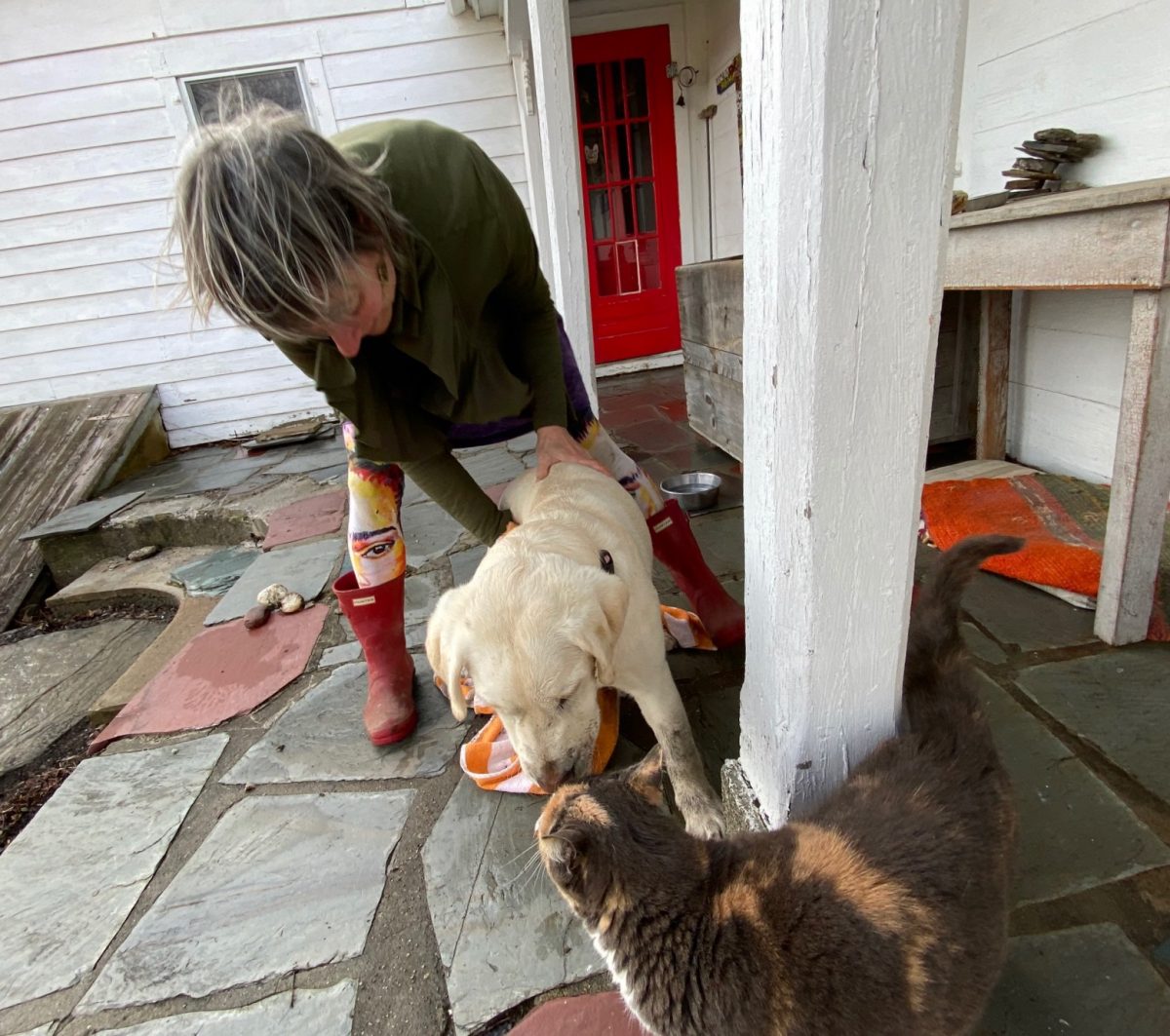Zinnia is seven months old now, and she holds several dog records for me.
She is the cutest and most endearing dog I have ever owned, and she is moving up fast on the Most Disgusting Dog List (the previous holder was Lenore, also a Labrador Retriever.)
Labs are notorious for their loyalty, trainability (they will kill for a piece of cracker), and solid temperament. There is less written about their other dominant trait: they are disgusting.
Once or twice a week, I will hear Zinnia heaving and spit up some dreadful thing she has eaten out on our walks – rotting animal bones, stones, bits of plastic, dead bird feathers, coyote scat, rotting chunks of wood.
There’s not much heaving or even much mess. She just spits out the bone or wood chunk or unmentionable and goes and looks for something to eat.
If there is a puddle or dirt mound or swamp with black mud, she will find it, dive into it, roll in it, and, if not stopped, eat some of it. I’m working on the “leave it,” command, progress is slow.
Zinnia is happy in our pasture, sticking her nose in sheep butts hoping for some pellets before they drop out. And she loves any bit of garbage she can find.
The sheep – especially those in heat – seem to like it. She often comes out of the swamp covered in black mud, which ends up on the carpets and floors of the farmhouse, no matter how much we wipe.
I don’t know how any Lab survives what they eat. Vets often joke about the things they have removed from Lab stomachs. Usually, they are not funny.
There is a little-known reason for their indiscriminate eating of disgusting stuff. Labradors are not from Labrador in Canada; they are from Newfoundland.
They were bred to go out on fishing boats, and when the boats came into shore, the early Labs – big and strong with heavy coats – would carry the fish up to the farmer’s house on the hills above the water one by one.
The farmers never let the dogs into their homes and never fed them, so the Labs survived by eating any kind of garbage they could find – dead fish, fish guts, Sea Gull feces. That’s how they lived.
Eventually, British breeders brought them to England and cleaned them up a bit, breeding them to be social hunting and family dogs, bred to attach to people, and work for them.
They became more civilized and smaller, but they never lost their passion for eating the disgusting things of the world, food that even most other dog breeds wouldn’t touch. When we come back from our walks, we have towels to wipe the Princess down, usually as she and Minnie are snuggling on the other end.
Zinnia, like most Labs, loves everyone and everything (except strollers). Her sweetness and work ethos makes up for her being so disgusting. She is a testament to love.
You love a disgusting dog by seeing how loving and attentive they are, and how eager they are to do the work we need them to do. I am grateful the Bishop Maginn students and the Mansion residents don’t see what she throw up at night.


For the first two years of her life, my Old English Sheepdog, Lola, used to eat rocks (she could actually pulverize a good-sized stone into gravel), socks, and large cat-toy mice — the kind with velcro bellies where you tuck catnip. About once a week, Lola would ‘return’ the contraband. With the exception of the rocks, everything would be covered wtih a bright lime-green slime (bile from her gut), but would be intact and could be tossed in the washer and come out as good as new. I became very conscientious about keeping things for which she had a particular penchant picked up, but she continued to yak up objects I never knew she’d eaten. I also began crating her while I was at the office. I came home for lunch one day to discover HOW she’d been getting these items, despite my best efforts. I found the cat sitting atop the dog’s crate dropping the stuffed mice in to her. I firmly believe the cat had been orchestrating Lola’s demise, but once I knew the source, I derailed the cat’s plan.
Laughing out loud! Gotta love her.
You made me laugh! So grateful!
Thanks Patricia, when we stop laughing, we are doomed..